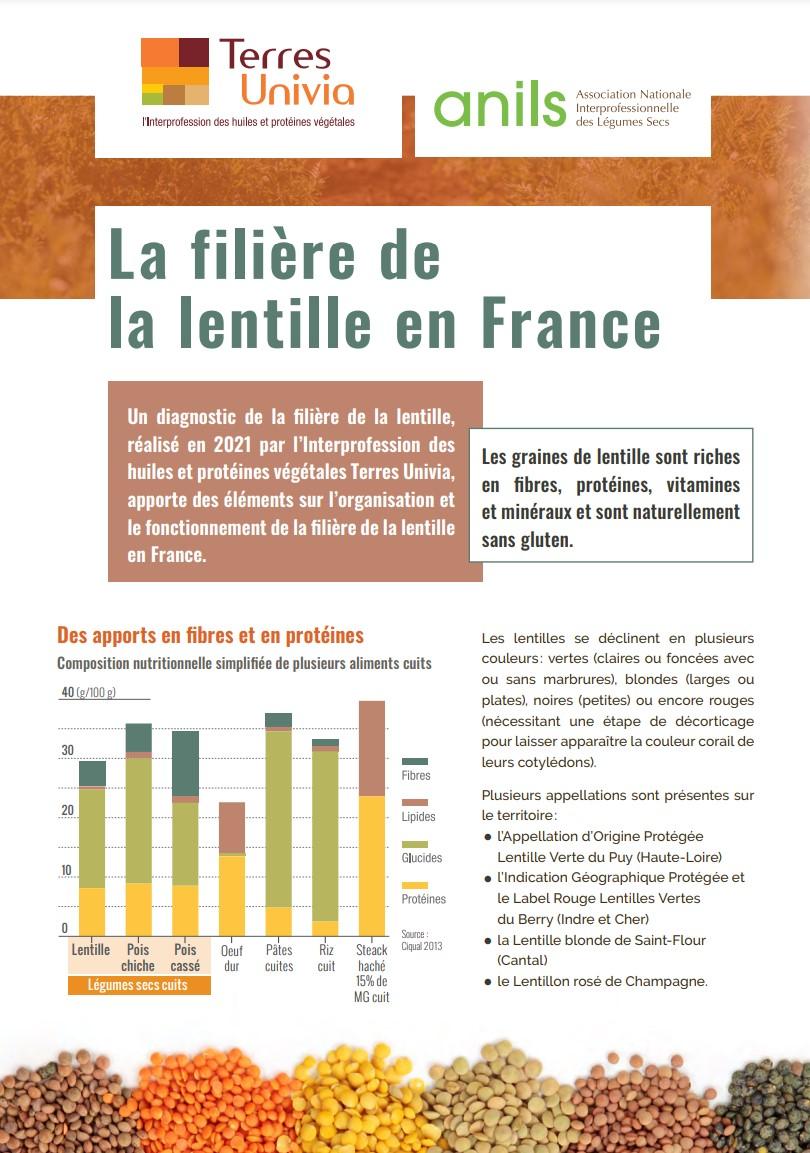Lentil harvest 2022
Lentil harvest 2022
A heterogeneous campaign according to the production basins
Paris, October 3, 2022 - Terres Univia, the vegetable oil and protein trade association, and Terres Inovia, the technical institute for the vegetable oil and protein and hemp sectors, have announced that the national lentil harvest in 2022 will be better than in 2021, but that it will be marked by a great heterogeneity in territorial yields due to the dry spells in spring.
A campaign with heterogeneous yields
The lentil area for 2022 was down on 2021, when 34 900 hectares (ha) were in production. Although the 2022 harvest was better overall at the national level than in 2021, it nevertheless revealed disparate yields depending on the production basin, sometimes much lower than or very close to the ten-year average yield.
Thus, the southern Atlantic coast, where all field crops have been affected, shows the largest drop in yields compared to the averages of previous years, with average yields of between 4 and 8 q/ha for surface land production (vs. 12- 14q/ha). The Centre-Val de Loire region, on the other hand, saw a less marked drop in yield, with an average yield of 14 q/ha (vs. 20-22 q/ha). On the other hand, sectors such as Aube, Marne and Yonne or Haute-Loire as well as Puy-de-Dôme, have increased yields compared to 2021, close to the average yields observed on the crop with an average of 16 q/ha (vs. 20 q/ha) for the Eastern zone.
Impacts of spring droughts
The year 2022 was characterised by a dry and cool start to the campaign on a national scale with delays in development in certain regions linked to these weather conditions. Flowering was early and then blocked by the heat. All production areas were spared from telluric and foliar diseases due to the dry growing conditions. In addition, pest pressure was fairly heterogeneous, with a few aphid outbreaks with no major impact on crops in the north-east and bruchids sometimes very present in the production basins.
The support for legume crops - including lentils - provided for in the new Common Agricultural Policy (CAP) could make it possible to support French production in 2023 so that it can soon satisfy all the demand of industrialists and consumers for lentils of local and sustainable origin.
"The yields of the lentil harvest are certainly better than last year, but French production needs to be supported intensively and over the long term by research in addition to the contractualisation and structuring of the sector. The full integration of pulses into Terres Univia's national strategy since 23 June is also an additional asset for developing the lentil sector," adds Antoine Henrion, farmer and President of Terres Univia.
"The cultivation of lentils must be supported in the long term by research and innovation in order to sustain French production. This is the purpose of Terres Inovia's applied research programmes, particularly in the framework of the Cap Protéines* programme. The Institute's teams are mobilized on a daily basis to find the technical solutions best suited to the impacts of climate change on our crops and to the pressure of diseases and pests," says Gilles Robillard, farmer and President of Terres Inovia.
A diagnosis of the lentil sector in France
Surfaces, yields, production areas, agronomic advantages, grain processing, outlets... Terres Univia has carried out a complete diagnosis of the lentil sector in France in 2021.
All this information is available in this panorama, which was produced on the basis of interviews with economic players from all the links in the sector, from upstream to downstream. See the attached brochure or visit the Terres Univia website.
*Research, development, innovation and transfer programme of the Protein Plan led by Terres Inovia and the Institut de l'élevage (Idèle) in the framework of France Relance
